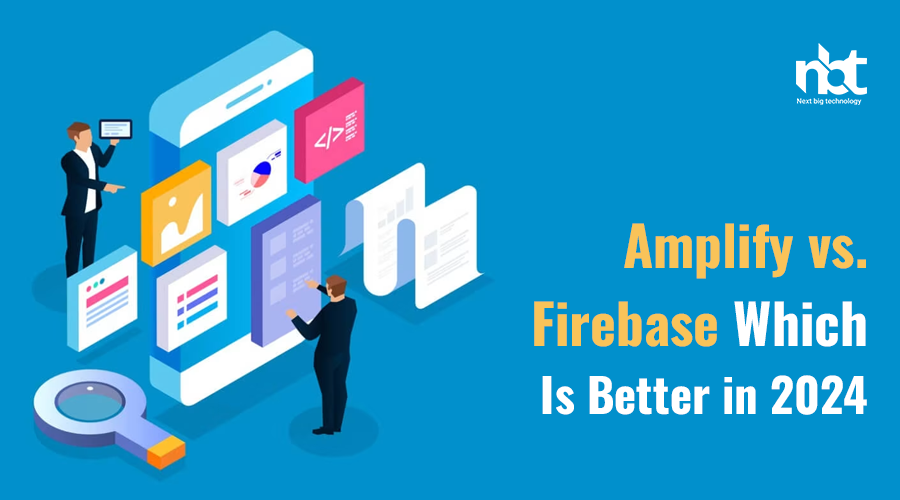Table of Contents
Introduction to Amplify and Firebase
In the realm of app and web development, choosing the right tools and platforms is crucial for success. Two popular options that developers often consider are Amplify and Firebase. Both offer a plethora of features and services to streamline the development process, but understanding their differences and strengths is essential for making an informed decision. In this article, we’ll delve into the fundamentals of Amplify and Firebase, exploring their key features, benefits, and use cases.
Understanding Amplify
Amplify, developed by Amazon Web Services (AWS), is a comprehensive development platform that provides a wide range of services and tools for building scalable and secure applications. At its core, Amplify simplifies the process of developing cloud-powered applications by offering a unified platform with built-in capabilities for authentication, storage, databases, analytics, and more.
Key Features of Amplify:
- Authentication: Amplify offers easy-to-use authentication services, supporting various authentication methods such as email/password, social sign-ins, and federated identities.
- GraphQL API: With Amplify, developers can effortlessly create GraphQL APIs to interact with data stored in the cloud, enabling seamless integration with frontend applications.
- Storage: Amplify provides scalable storage solutions, allowing developers to store and manage user-generated content, media files, and other data securely.
- Analytics: Gain valuable insights into user behavior and application performance with Amplify Analytics, which offers real-time analytics and reporting capabilities.
- Functionality as Code: Amplify utilizes a “functionality as code” approach, enabling developers to define application infrastructure and resources using a declarative syntax, which can be easily managed and version-controlled.
Exploring Firebase: Firebase, acquired by Google, is a mobile and web application development platform that offers a wide range of backend services and tools. It provides developers with everything they need to build, improve, and grow their applications, all in one integrated platform.
Key Features of Firebase:
- Realtime Database: Firebase offers a NoSQL cloud database that supports realtime data synchronization across clients. This enables developers to build responsive and collaborative applications with ease.
- Authentication: Firebase Authentication provides a straightforward way to authenticate users using email/password, social logins, and other identity providers, ensuring secure access to your application.
- Cloud Functions: Firebase Cloud Functions allow developers to run server-side code in response to events triggered by Firebase features and HTTPS requests, enabling seamless integration with other services and workflows.
- Hosting: Firebase Hosting provides fast and secure hosting for web applications, with features such as SSL encryption, CDN integration, and custom domain support.
- Analytics and A/B Testing: Firebase Analytics offers comprehensive app analytics, while Firebase A/B Testing enables developers to experiment with different app configurations and user experiences to optimize performance and engagement.
Choosing the Right Platform:
When deciding between Amplify and Firebase, it’s essential to consider factors such as your specific project requirements, development expertise, scalability needs, and budget constraints.
- Amplify might be the right choice if you’re already invested in the AWS ecosystem or require a wide range of AWS services beyond what’s offered by Firebase.
- Firebase, on the other hand, might be preferable if you’re looking for a more streamlined and integrated solution, particularly if you’re building a mobile app or need realtime database capabilities.
Developer Experience and Ease of Use
In today’s fast-paced digital landscape, the success of any software product hinges not only on its functionality but also on the experience it delivers to developers. Developer experience (DX) plays a pivotal role in shaping the ease of use of a platform or tool, directly impacting productivity, efficiency, and ultimately, the satisfaction of end-users. By prioritizing DX, companies can unlock a plethora of benefits, from accelerated development cycles to improved product quality and heightened innovation. Let’s delve deeper into the significance of developer experience and explore strategies to enhance ease of use.
What is Developer Experience (DX)?
Developer experience encompasses the sum of interactions and perceptions developers encounter while using a particular platform, library, or tool to build applications. It encompasses various facets, including documentation quality, ease of integration, tooling support, community engagement, and overall usability. A positive DX fosters a conducive environment for developers to work efficiently, collaborate effectively, and unleash their creative potential.
Importance of Developer Experience
- Productivity Boost: A well-designed DX streamlines workflows, reduces cognitive load, and minimizes friction, empowering developers to focus on solving complex problems rather than wrestling with cumbersome tools or outdated documentation.
- Retention and Engagement: Developers gravitate towards platforms that offer intuitive interfaces, comprehensive documentation, and responsive support channels. A positive DX not only attracts new developers but also fosters loyalty among existing users, leading to increased engagement and retention rates.
- Innovation Catalyst: By removing barriers to entry and providing seamless access to resources, a superior DX fosters a culture of experimentation and innovation. Developers are more inclined to explore new features, contribute to open-source projects, and share their insights within the community.
Strategies for Enhancing Ease of Use
- Intuitive Design: Invest in user-centric design principles to create intuitive interfaces that guide developers through common tasks and workflows seamlessly. Prioritize consistency, simplicity, and accessibility to ensure a frictionless user experience across all touchpoints.
- Comprehensive Documentation: Develop comprehensive documentation that goes beyond mere API references to provide practical examples, tutorials, and troubleshooting guides. Organize content logically, employ clear language, and incorporate multimedia elements to cater to diverse learning styles.
- Developer Support: Establish robust support channels, including forums, chat rooms, and dedicated support teams, to address developer queries and resolve issues promptly. Encourage community participation and foster a culture of knowledge sharing to leverage the collective expertise of the developer community.
- Seamless Integration: Simplify the integration process by providing well-documented APIs, SDKs, and libraries that abstract away complexity and facilitate interoperability with other tools and services. Embrace industry standards and best practices to ensure compatibility and ease of integration across diverse ecosystems.
- Continuous Improvement: Solicit feedback from developers through surveys, user testing, and analytics to identify pain points and areas for improvement. Iterate on existing features, prioritize feature requests, and proactively address emerging challenges to stay ahead of evolving developer needs.
Customization and Flexibility Amplify and Firebase
In the modern world, customization and flexibility have become pivotal aspects of our daily lives, offering us the opportunity to tailor our experiences and environments according to our unique preferences and needs. Whether it’s choosing the specifications of a product, designing our schedules, or shaping our personal development paths, the ability to customize and adapt is a game-changer. Let’s delve into how embracing customization and flexibility can enrich various aspects of our lives.
Personalized Products and Services: One of the most evident manifestations of customization is in the products and services we use. From smartphones to streaming services, companies now offer a plethora of options for customization, allowing consumers to personalize their experiences. Whether it’s selecting the features of a smartphone, customizing playlists on music apps, or even designing bespoke clothing, the power to tailor products and services to individual preferences enhances user satisfaction and engagement.
Tailored Work Environments: In the professional realm, flexibility has become increasingly valued, with remote work and flexible schedules gaining prominence. This shift not only promotes a better work-life balance but also allows individuals to optimize their productivity by working in environments conducive to their preferences. Whether it’s working from home, a co-working space, or a café, the ability to customize one’s work environment fosters creativity and efficiency.
Adaptive Learning Paths: Education is another area where customization and flexibility play a crucial role. With the rise of online learning platforms and personalized learning tools, students can now tailor their educational experiences to suit their learning styles and pace. Whether it’s choosing the format of lessons, accessing supplementary materials, or participating in interactive activities, personalized learning empowers students to take control of their education and achieve better outcomes.
Customized Health and Wellness: In the realm of health and wellness, customization has revolutionized how individuals approach their well-being. From personalized fitness plans and dietary regimes to tailored healthcare treatments, advancements in technology have enabled us to optimize our health based on individual needs and preferences. Whether it’s tracking fitness goals with wearable devices or consulting with healthcare professionals to develop personalized treatment plans, customization enhances our ability to lead healthier lives.
Flexibility in Personal Growth: Lastly, flexibility is crucial in personal development and growth. Life is unpredictable, and being adaptable allows us to navigate its twists and turns more effectively. Whether it’s pursuing new hobbies, exploring different career paths, or embracing changes in relationships, being open to flexibility enables us to seize opportunities for growth and fulfillment. By remaining adaptable, we can overcome challenges, embrace change, and continually evolve into the best versions of ourselves.

























